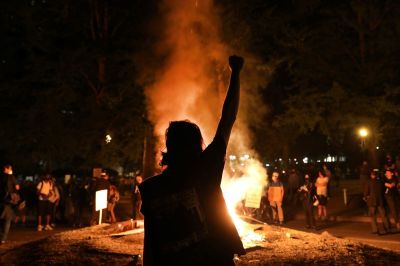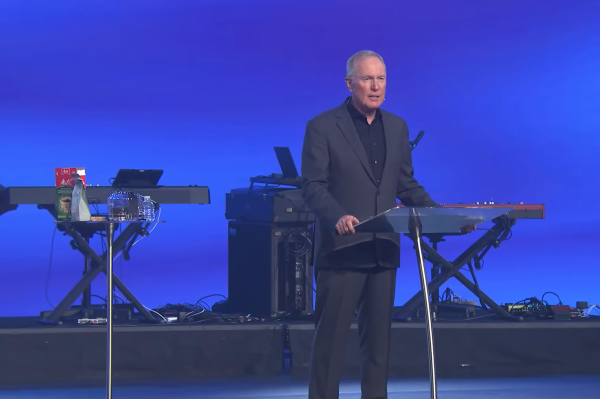Who suffers the most from crime wave?

Violent crime, like the price of gas, is rising. Not everyone is experiencing this crime wave in the same way. For some, it’s a distant issue experienced by other people somewhere else. For others, it’s a daily life-threatening concern.
We parsed the FBI’s crime data from 2011 to 2020 (the most recent data available) and found that African Americans bear an increasingly large share of the harm from crime. African American offenders, meanwhile, are committing an increasingly large share of violent crimes.
For other racial groups, the numbers are either decreasing (in the case of both white victims and offenders), increasing by much smaller amounts, or holding constant.
Crime by the numbers
According to federal crime data, the number of violent crimes has increased by almost 50% over the last 10 years. In 2011, the FBI reported 314,907 violent offenses. In 2020, there were 640,836.
The most striking figure in the data is the spike in reported homicides, which tripled from 3,549 offenses in 2011 to 10,440 offenses in 2020.
The picture that federal crime data provide is bad, but the reality of crime in the United States is even worse. The FBI’s data is not complete. It relies on local law enforcement agencies across the country to voluntarily share their local data with the FBI. Not all do.
In 2020, nearly 3,000 law enforcement agencies around the country opted not to send the FBI their crime data, leaving 14.8% of law enforcement agencies, and the crimes committed in their respective jurisdictions, unaccounted for in the National Incident-Based Reporting System.
In truth, violent crime — especially homicide — is worse than the National Incident-Based Reporting System statistics show. According to other sources, the number of homicides in 2020 was more than double what those statistics report: 21,750.
However high the raw numbers are, the upward trend is disturbing. For most types of violent crime tracked by the FBI, the number of offenses has more than doubled in the last 10 years.
The number of police officers killed feloniously is rising, too. In 2021, 73 were murdered, a 20-year record for the number of officers killed in the line of duty.
The increase in crime, though drastic, has not been steady over the course of the past decade. America witnessed much larger spikes in violent crime in 2020, especially homicide, than any of the previous 10 years.
Who suffers?
Although the National Incident-Based Reporting System is not complete, it provides useful insights into who suffers from and who commits crime because it tracks demographic data about both sets of people.
We utilized the FBI’s crime data to compare victim statistics to determine which groups have been most impacted by the rise in violent crime. Factoring out the cases in which the race of the victim was unknown, we calculated who has borne the brunt of the crime wave.
For this analysis, violent crime includes assault, homicide, and sex offenses. We found that the increase in these crimes has fallen hardest on black people.
From 2011 to 2020 the percentage of violent crime victims who were black increased by 3.2% to reach a peak of 32.7% in 2020. By contrast, the percentage of total victims who were white steadily declined from 69.1% to 64.7% over the same period.
For Native Americans and for Asians, the changes were smaller. For the former, the percentage increased by 0.3% to compose 1.1% of all victims. The latter saw an increase of 0.4% to compose 1.2% of victims in 2018, which held constant through 2020.
When we look at homicide specifically, we see similar trends. The percentage of total victims who were black rose 2.9% to 54.4% in 2020. For white victims, the percentage fell 3.5% to 43.3% over the same period. Again, with Native Americans and Asians, the changes were much smaller. For the former, the percentage increased 0.4% to 1.1%. For Asians, the rate increased by 0.4% to a high of 1.4% in 2018, and then fell by 0.4% back to the 2011 rate of 1% in 2020.
The most significant changes, therefore, were that black people represent an increasing share of violent crime victims, and white people a smaller share. It’s true that we’re dealing in relatively small percentages (less than 5%), but when you consider that the number of violent crimes has more than doubled, you realize that these increases are significant.
The true size of the problem is made starker when we consider that African Americans make up only 14.2% of the total population (including multiracial populations who identify as black “in combination” with another race), but 32.7% of all violent crime victims and 54.4% of homicide victims. Thus, these small percentages represent an enormous problem that, for black people, is getting worse, both in relative and absolute terms.
Who’s doing it?
With race-essentialist rhetoric at a fever pitch bemoaning the omnipresence of white supremacy, some might be tempted to conclude that the relative decrease in white victims and the relative increase in black victims is attributable to a spike in racial hatred. That hypothesis would suggest that the relative number of white offenders is increasing, and the relative number of black offenders is remaining constant or decreasing.
In fact, the opposite is true. Again, after factoring out the cases in which the race of the perpetrator was unknown, the relative share of offenders by racial groups followed a similar trend to the share of victims.
From 2011 to 2020, the percentage of total violent offenders who were white fell 3.4% to 58%. With respect to homicide specifically, the percentage fell by 0.8% to 43.1%. By contrast, over the same period, the percentage of total violent offenders who were black rose 2.4% to 39.4%. And with respect to homicide, the percentage rose 0.3% to 54.7%.
This small increase hides a more dramatic recent trend because the percentage of black offenders fell several percent from 2011 until 2019. That year, it jumped 1.0%, and in 2020 it jumped another 1.2%.
Again, these are small percentage changes, but considering the surging crime numbers and the fact that African Americans make up a relatively small percentage of the total population, the implications are huge.
As for Native Americans, the percentage of total violent offenders in this category increased by 0.4% to 1.3%. And as for Asians, the percentage increased by 0.3% to 1.0%. For homicide specifically, Native American offenders increase by 0.4% to 1.2% of total homicide offenders, and Asians fell 0.2% to a total of 0.7% of homicide offenders.
Other explanations?
It is possible that trendy race-essentialist rhetoric is playing a role in what we are seeing. Domestic studies are needed to establish a clear connection, but there are studies from abroad that suggest that race rhetoric may lead to racial violence. If race rhetoric is, in fact, playing a role, it’s possible that what we’re seeing today we have seen before.
The increase in black offenders and black victims is reminiscent of the fallout from the Black Power movements of the 1960s. Historian C. Vann Woodward recounts that history in his magisterial book “The Strange Career of Jim Crow.”
Woodward observed that radicals began to reject the approach of “the old civil rights movements,” which called for peace, equality, and integration. The radicals favored “racial separatism” and “black nationalism,” which gave way to “bursts of black violence, disorder, and frustration.” The irony of this violence, however, was that it occurred primarily in black neighborhoods, and “the main victims” were working-class black people.
The trendy race-wisdom of today shares similar traits. Like the Black Power movement, it is more focused on calling out and rebuking the supposed omnipresent specter of white supremacy than it is on peace, equality, and integration.
As with the riots of the 1960s, the anti-police riots of 2020 caused significant harm to black neighborhoods and black-owned businesses. Additionally, on social media sites associated with these views, violent rhetoric is common.
Ultimately, more research is needed before we can conclude that the present-day race-essentialist rhetoric is a causal factor in the present increase in black victims and offenders. Still, the historical parallels provide some support for the theory.
Regardless, whether it is caused by race rhetoric, the Minneapolis Effect, rogue prosecutors, or some combination of them or other things, the spike in crime is hurting a lot of people, and black communities bear the heaviest burden.
Originally published at The Daily Signal.
GianCarlo Canaparo is a legal fellow in the Edwin Meese III Center for Legal and Judicial Studies at The Heritage Foundation.
Abby Kassal is a member of the Young Leaders Program at The Heritage Foundation.





















